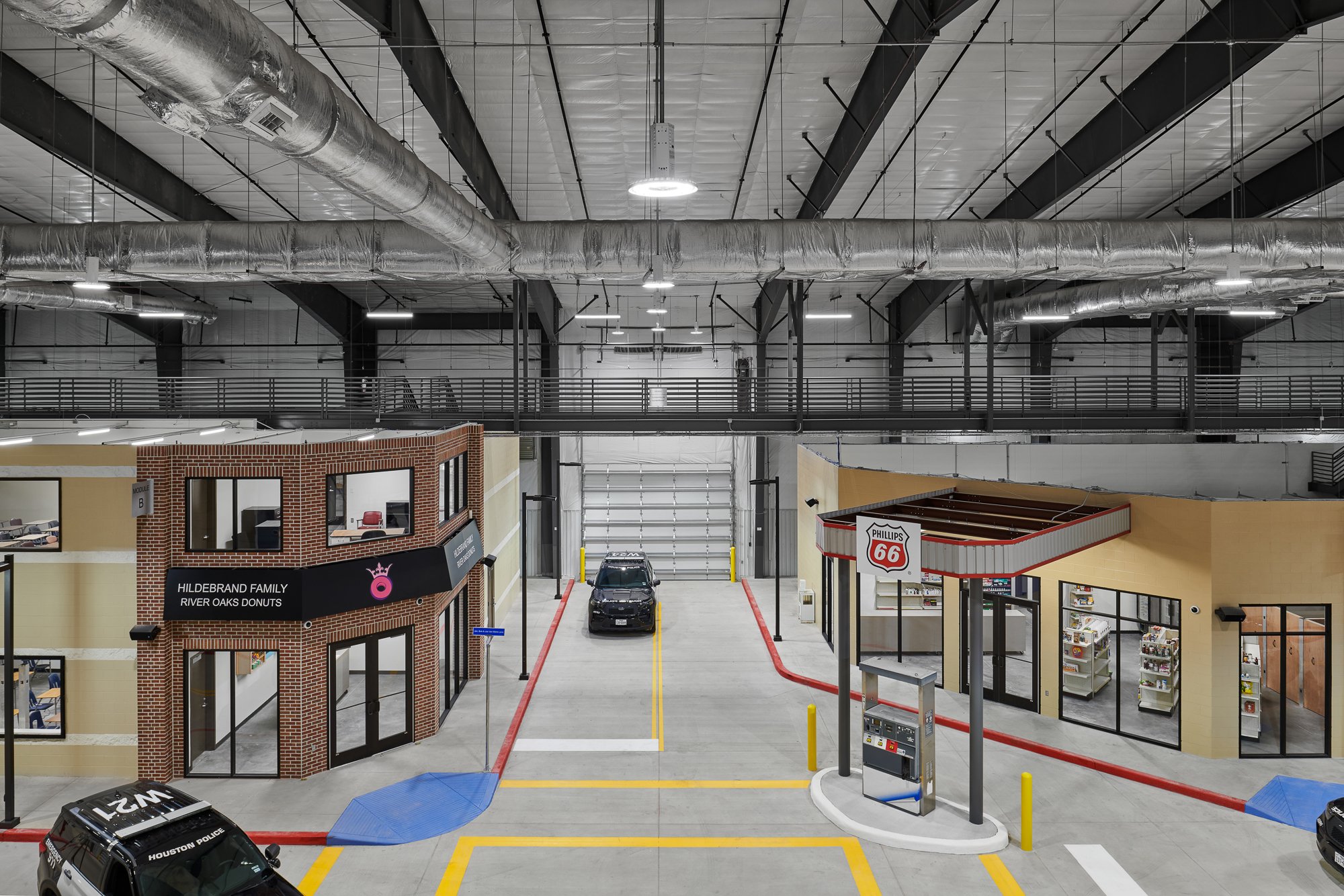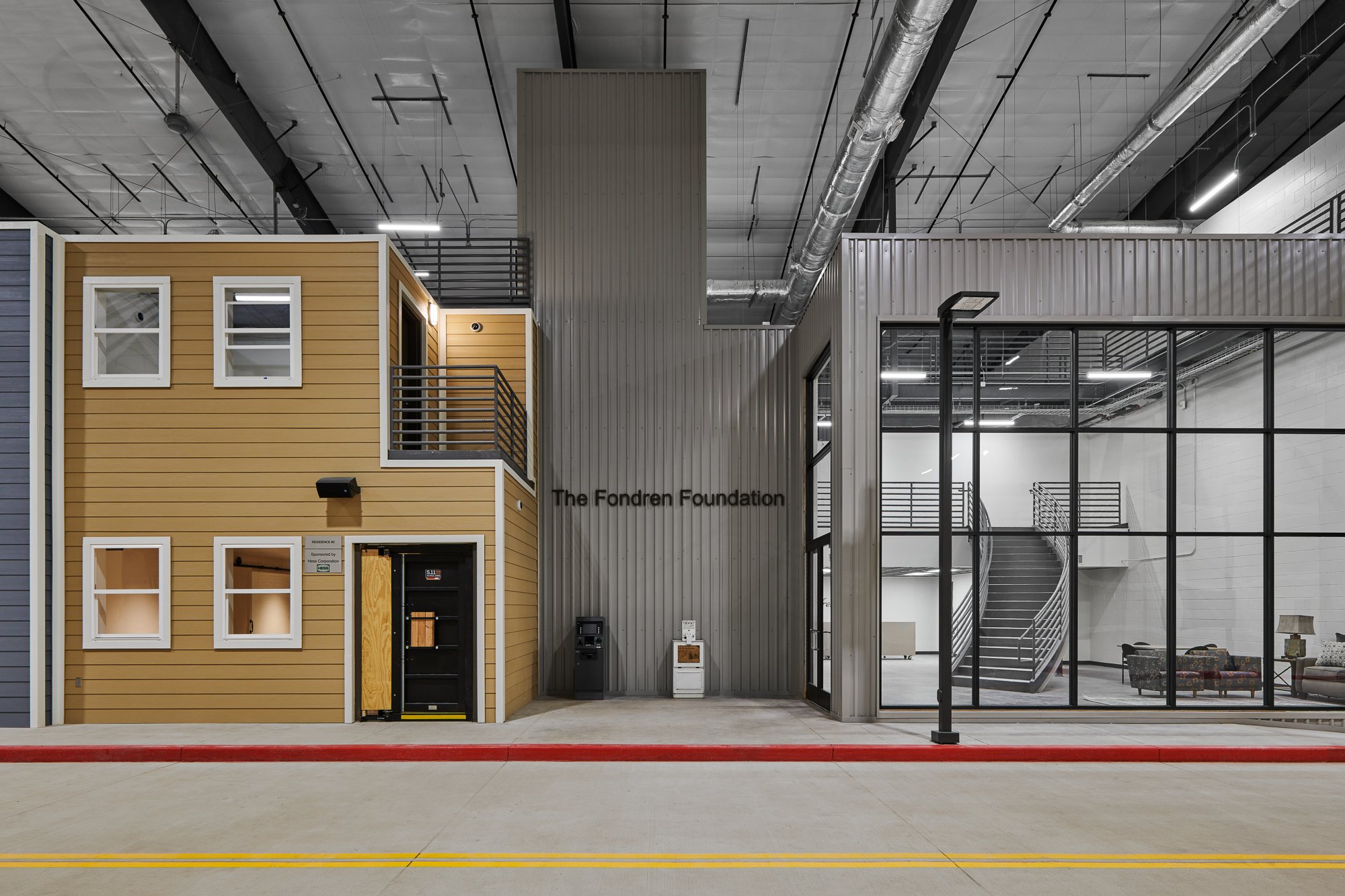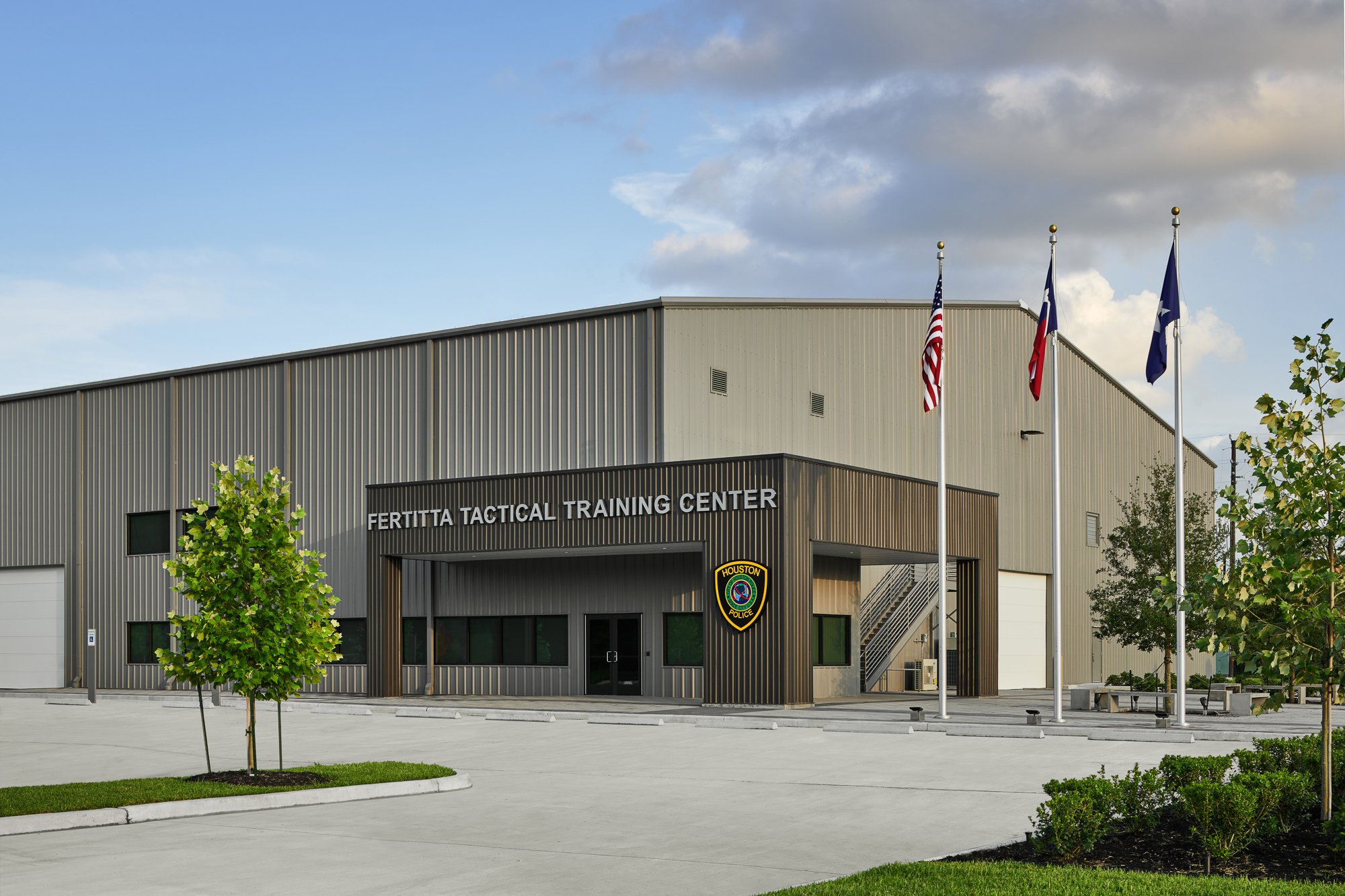Ensuring A Safe Tomorrow Through Better Training
Realistic Training Is Now More Important Than Ever
Violent and often deadly scenarios play out in devastating ways all across our nation. Most police departments don’t have access to facilities like the award-winning Houston Police Tilman Fertitta Family Tactical Training Center in Houston, one of only a handful of advanced training facilities of this type in America. Most advanced training still relies on videos or classroom-based scenarios. Though “it’s a night-and-day difference,” according to Lt. Matt Williams of the Narcotics Division. “When you go from a sterile to live environment, you’ll have the training to account for kids’ toys all over the floor.” Facilities like this one equip and train through reality-based scenarios and are critical to force readiness.
At a time when the political environment in this county is about defunding police, former Chief Charles McClelland, who first conceived the new center, notes “Everyone around the country now is clamoring for the officers to do more training. When you expect officers to behave or do something differently, they have to be trained differently.” According to Chief Art Acevedo, the training center will help to prevent future deaths.
True, But Who Pays the Tab?
A realistic tactical training facility may be an urgent need for a good number of large cities in the US, though budgeting funds to finance development might not be politically expedient. A public-private partnership between the city of Houston’s government, and police department private and non-profit benefactors was the route Houston chose to develop the center. The Houston Police Foundation’s Executive Director created clever opportunities for naming rights for sponsors on every street corner and every “business” within the tactical village. Longtime friend of HPD and HPF, Tilman Fertitta, championed the cause with a $2.5M donation to get things started. After commissioning, the upkeep of the facility becomes the responsibility of the City.
Planning Such A Unique Building Type
Whether in a night club, a hotel, a bank, a place of worship, a workplace or a school, high risk policing scenarios can occur in any place or building type. Housed entirely within the unassuming shell of a pre-engineered steel building, this state-of-the-art training facility includes two intersecting city streets, paved to accommodate the heaviest tactical vehicles. This allows department access with a full complement of vehicles and equipment, and in the most authentic setting possible.
On three quadrants flanking the streets are six individual “training modules” – replica buildings designed to simulate real-world environments of a hotel lobby, townhouses, school classrooms, a donut shop, a convenience store/gas station, and a bank. The fourth quadrant houses staff offices, training classrooms, a live-fire simulator, and a control room to monitor exercises and training missions underway in the modules, and provides access to the extensive catwalk system. Training here will equip officers to arrive at a scene ready for immediate response, by training in life-like mock-ups of most building types that one might encounter in any part of an urban or suburban environment.
A Specialized Building
The building type that can house all of the necessary authentic physical conditions falls under a classification that triggers certain automated climate and electrical controls. Some of these regulations create conflicts for conditions that will be generated during training exercises – for example smoke and explosives fumes. Getting a building with this type of specialized equipment to work as needed within code requires detailed programming and close coordination of a highly specialized multi-disciplinary team of architects, engineers, and suppliers. Incorporating the latest technology offers constant direct monitoring of training sessions and simulations via an overhead catwalk and the latest digital video and audio systems. Thus, not only are training sessions recorded for playback and analysis, but sessions are enhanced with sound-effects and realistic, day or night lighting.
When an agency decides to train to this level of sophistication, the schedule to fully commission a facility like this can be accomplished with a year of pre-construction work, and takes about a year to build.





